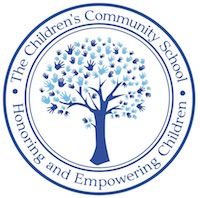Creating a Schedule
Since transitions can be bumpy for my kiddos (and for me!), we’re going to be following a schedule similar to that of school in order to help our kids stay in their familiar groove. Where it is possible to create some predictability in the day of your kiddo, maintaining a schedule can help your child feel more calm and in control as they know what to expect throughout their day. We posted ours in our kitchen so that the kids can consult it throughout the day and see “what we’re up to!” We’ve gone over it at breakfast each day as a family using a spatula as a pointer:).
Our schedule goes as follows: (See image below)
Free Play Wake up- 9:00
Morning Meeting 9:00-9:15
Centers Time 9:15-10:00
Snack 10:00-10:15
Read Aloud 10:15-10:35
Get Dressed to Go Outside 10:35-10:45
Stroller Walk 10:45-11:15
Outside Time 11:15-11:45
Lunch Prep 11:45-12:00
Lunch 12:00-12:15
Silly Time 12:15-12:45
Quiet Time 12:45-1:30
Reading, Writing, Math 1:30-2:30
Closing Circle 2:30-2:45
Facetime with a Friend 2:45-3:00
I know families will have some questions about what different parts of our schedule mean or look like in practice. I will go through each element of the day over time, but today I thought I’d begin at the beginning with Morning Meeting.
Morning Meeting
At school, each class comes together every day to have this time together as a community. It may feel funny to do this with just your family, but it will add consistency to your child’s day and they will love getting to be a leader by showing you the “right” way to do Morning Meeting . It’s a chance to do things such as sing a song, play a cooperative game, build community, learn something new and set expectations for the day. It’s also a focal point of our literacy program. The older classrooms Morning Meetings begin with a written message. I used a child’s easel to write our message, but you can also just hang a piece of paper on your wall or refrigerator.
I wrote a short message to the kids following the three sentence structure used in the Juneberry and Magnolia rooms:
1. Good morning (or other greeting)!
2. Today is _____________________.
3. Write a question or interesting fact about the day. (eg. “What makes you mad?”, “What is your favorite dinner?”or “Today we will FaceTime with a friend!”).
My message read: (See image below)
Good morning__
Today is Saturday.
What is your favorite song?
Since I don’t have a teacher’s pointer at home, I used a wooden spoon to point at each word. It’s important that children see you model pointing to each word as it is spoken and see you model the top to bottom, left to right progression of the text.
I left a blank after the words “Good morning” and asked the kids whether they wanted to use a period or an exclamation mark at the end of the sentence. We practiced saying the sentence the way it would sound with each type of punctuation mark: in a plain voice with a period and in an excited voice with an exclamation mark. We ultimately chose an exclamation mark and practiced writing one on the board.
I also introduced the kids to the sight word is. In teaching reading, I always call the word is The Wiz of Is and ask children to draw a triangular wizards hat around it whenever they see it in text. I also ask them to hold their hand together over their head to form a triangular “wizard hat” whenever they hear the word read aloud. Sounds silly; I swear it works. My kids each found one is on the board and drew a triangular hat around it. They were excited to recognize the word is for the rest of the day in print and in speech!
Finally, we shared our favorite songs. We then took turns listening to them and dancing to them to end our meeting.
There are a million different kinds of morning meetings and this is only one example! The most important thing if you want to try out a Home School schedule is that you develop some kind of ritual that involves coming together and acknowledging that the day is beginning. In the coming days, I will be sending out information about what other parts of our schedule look like in practice. Please reach out with any questions!
Best of luck; we’re in this together.
In partnership,
Carrie
Curriculum Coordinator
